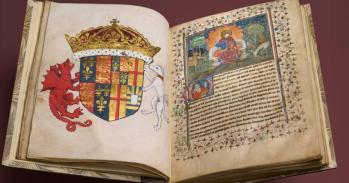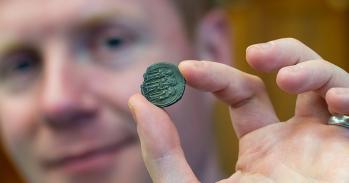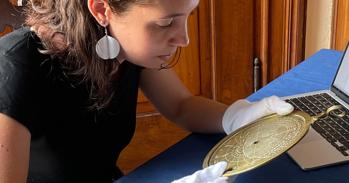
A new study of the 14th-century narrative poem Libro de Buen Amor explores how its earthy tales of failed love are shaped by humour.
A new study of the 14th-century narrative poem Libro de Buen Amor explores how its earthy tales of failed love are shaped by humour.
I have re-positioned Juan Ruiz’s Libro in relation to broader trends in 14th-century culture, with a particular focus on the relationship between humour and scholasticism, the body, and visual culture.
Dr Louise Haywood
The medieval poem Libro de Buen Amor (‘The Book of Good Love’) by Juan Ruiz tells the story of 14 failed love affairs, combined with animal fables, sacred and profane lyrics, and doctrinal matters. The ribald tales, colloquial language and vivid characters (particularly the narrator, an Archpriest ‘fallen’ from grace because of his amorous dalliances) have led Ruiz to be dubbed the ‘Spanish Chaucer’. Its 1728 stanzas are the subject of a new analysis, which is due to be published in April 2008, by Dr Louise Haywood from the Department of Spanish and Portuguese.
The canonical work by Juan Ruiz is of great importance for its contemporary references and literary scope. It is richly evocative of medieval cultural attitudes relating to love, religion and emotion, and hence is a much-studied work among students and scholars of Iberian literature from this era. ‘It is one of the most challenging and thought-provokingly diverse works in world literature,’ said Dr Haywood, ‘and its impact on Spanish culture continues to be felt today.’
Humour has long been recognised as an important part of Ruiz’s artistry but Dr Haywood’s study of the Libro will be the first to approach the role of humour systematically in this iconic work. ‘I have re-positioned Juan Ruiz’s Libro in relation to broader trends in 14th-century culture, with a particular focus on the relationship between humour and scholasticism, the body, and visual culture. In essence: sex, scandal and sermon.’
For more information, please contact Dr Louise Haywood (lmh37@cam.ac.uk), whose book Sex, Scandal, and Sermon in the Fourteenth Century: Juan Ruiz’s ‘Libro de Buen Amor’ will be published on 1 April 2008 by Palgrave Macmillan.
This work is licensed under a Creative Commons Licence. If you use this content on your site please link back to this page.





